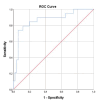Are the Hematological Parameters Useful in Differentiating Acute Pyelonephritis from Cystitis in Patients with Chronic Kidney Disease?
- PMID: 39553351
- PMCID: PMC11565154
- DOI: 10.26574/maedica.2024.19.3.511
Are the Hematological Parameters Useful in Differentiating Acute Pyelonephritis from Cystitis in Patients with Chronic Kidney Disease?
Abstract
Background and objectives: The importance of hematological parameters has started to be explored with increased interest in many fields lately, with different studies finding an association between those parameters and inflammatory status, atherosclerosis, comorbidities, malnutrition, neoplasia and even a faster progression of chronic kidney disease (CKD). On the other hand, CKD itself presents as an inflammatory condition, in which a lot of pathways are modified and the response to an infectious agent could be less than expected. Regarding the latter aspect, in this study we aim to explore the differences between the hematologic response during a lower versus upper urinary tract infection in patients with CKD.
Materials and methods: We analyzed 70 patients with chronic kidney disease and either cystitis or pyelonephritis considering the hematologic parameters, the classical inflammatory ones as well as the etiology of CKD.
Results: Neutrophils, neutrophils/lymphocytes ratio (NLR), erythrocyte sedimentation rate (ESR), C-reactive protein (CRP) and fibrinogen were higher in patients with pyelonephritis (PNA), while albumin was significantly lower. In a binary logistic regression model that explained 80.2% of the variability of PNA diagnosis and correctly predicted it in 92.9% of cases, NLR, CRP and fibrinogen were the independent predictors.
Conclusions: Hematologic parameters can serve not only as an indicator of the inflammatory status, but also as a laboratory biomarker for PNA in patients with CKD.
Conflict of interest statement
Conflicts of interest: none declared.
Figures





References
-
- Stevens PE, et al. KDIGO 2024 Clinical Practice Guideline for the Evaluation and Management of Chronic Kidney Disease. Kidney Int. 2024;105:S117–S314. - PubMed
-
- Zyga S, Christopoulou G, Malliarou M. Malnutrition-inflammation-atherosclerosis syndrome in patients with end-stage renal disease. J Ren Care. 2011;37:12–15. - PubMed
Publication types
LinkOut - more resources
Full Text Sources
Research Materials
Miscellaneous
